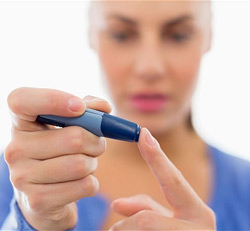 A study has confirmed that bacteria may cause type 2 diabetes. Bacteria and viruses have an obvious role in causing infectious diseases, but microbes have also been identified as the surprising cause of other illnesses, including cervical cancer (Human papilloma virus) and stomach ulcers (H. pylori bacteria).
A study has confirmed that bacteria may cause type 2 diabetes. Bacteria and viruses have an obvious role in causing infectious diseases, but microbes have also been identified as the surprising cause of other illnesses, including cervical cancer (Human papilloma virus) and stomach ulcers (H. pylori bacteria).
A new study by University of Iowa microbiologists now suggests that bacteria may even be a cause of one of the most prevalent diseases of our time — Type 2 diabetes. The research team led by Patrick Schlievert, PhD, professor and DEO of microbiology at the UI Carver College of Medicine, found that prolonged exposure to a toxin produced by Staphylococcus aureus (staph) bacteria causes rabbits to develop the hallmark symptoms of Type 2 diabetes, including insulin resistance, glucose intolerance, and systemic inflammation.
“We basically reproduced Type 2 diabetes in rabbits simply through chronic exposure to the staph superantigen,” Schlievert says. The UI findings suggest that therapies aimed at eliminating staph bacteria or neutralizing the superantigens might have potential for preventing or treating Type 2 diabetes.
Obesity is a known risk factors for developing Type 2 diabetes, but obesity also alters a person’s microbiome — the ecosystem of bacteria that colonize our bodies and affect our health. “What we are finding is that as people gain weight, they are increasingly likely to be colonized by staph bacteria — to have large numbers of these bacteria living on the surface of their skin,” Schlievert says. “People who are colonized by staph bacteria are being chronically exposed to the superantigens the bacteria are producing.”
Schlievert’s research has previously shown that superantigens — toxins produced by all strains of staph bacteria — disrupt the immune system and are responsible for the deadly effects of various staph infections, such as toxic shock syndrome, sepsis, and endocarditis.
The team’s latest study, published recently in the journal mBio, shows that superantigens interact with fat cells and the immune system to cause chronic systemic inflammation, and this inflammation leads to insulin resistance and other symptoms characteristic of Type 2 diabetes. In examining the levels of staph colonization on the skin of four patients with diabetes, Schlievert’s team estimate that exposure to the bacterial superantigens for people who are heavily colonized by staph is proportional to the doses of superantigen that caused the rabbits to develop diabetes symptoms in the team’s experiments.
“I think we have a way to intercede here and alter the course of diabetes,” Schlievert says. “We are working on a vaccine against the superantigens and we believe that this type of vaccine could prevent the development of Type 2 diabetes.”
The team also is investigating the use of a topical gel containing glycerol monolaurate, which kills staph bacteria on contact, as an approach to eliminate staph bacteria from human skin. They plan to test whether this approach will improve blood sugar levels in patients with pre diabetes. The study is done by University of Iowa Health Care.